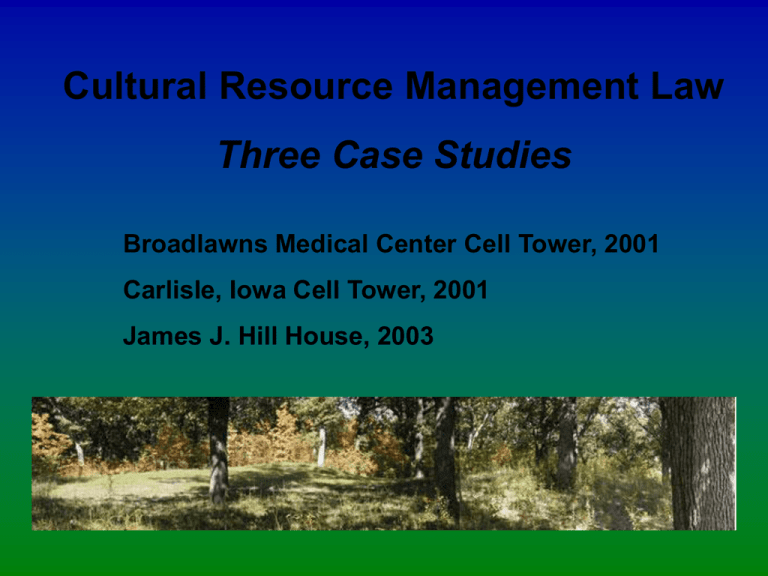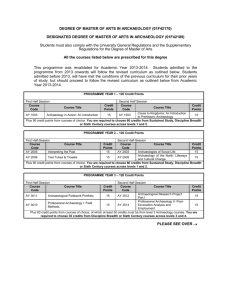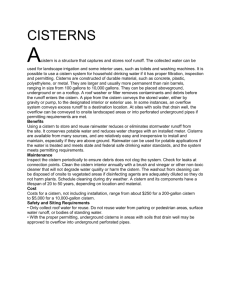Three CRM Cases
advertisement

Cultural Resource Management Law Three Case Studies Broadlawns Medical Center Cell Tower, 2001 Carlisle, Iowa Cell Tower, 2001 James J. Hill House, 2003 Purposes: •To examine several of cases where CRM laws, especially Section 106, have applied •To consider differing outcomes, dependent on conditions of each case Carlisle, Iowa Cell Tower 2001 Carlisle, Iowa Cell Tower An Early Iowa Industrial Center Parmelee Lumber and Flour Mill 1843 Carlisle Brick and Tile, 1936-1960s Carlisle Brick and Tile Works, 1950s Overview of Carlisle Project Area Pre-construction Getting Started: Phase 1 Using Heavy Equipment for Subsurface Testing Results? A buried brick floor at the tower center-point A Very Heavy-duty Auger Auger at Work The Cage Ground Loop Done! Broadlawns Medical Center Two Woodland Tradition Burial Mounds Damaged Taking Down the Tower The crane alone cost about $120,000! What’s left to get rid of? Plenty! Unfortunately, only one of the mounds The Hospital, State Archaeologist, Iowa Indian Advisory Board, and the Cell Phone Company agree on what to do… Howard Matalba Maria Pearson, Shirley Schermer, Steve Dasovich …rebuild the mounds and restore the area. The Process Selecting Clean Fill Strip off the ground cover Cleaning up the site Jackhammer away the top 3’ of the support Figuring out the height of the mound Bringing in Fill Moundbuilding, 2001 Seeding and installing natural ground cover Watching the grass grow The Cost? About $1,500,000 $85,000 for landscaping $200,000 for ground work $120,000 for the crane $1,195,000 for two new towers Digging on the Hillside Archaeology at the James J. Hill House, 2003 Prepared by Archaeology Larry J. Zimmerman Image, Power, and (Crumbling) Architecture Image & power Gardens & glory As the power fades The irony of time: the archaeology of inequality Homeless people and their “stuff” The Project: Restoration of Hillside Retaining Walls and Fixing Drainage Problems Drainage issues & damage Big cistern upslope Nothing lasts forever Doing Archaeology before restoration Why do archaeology? Documenting construction methods Documenting current condition of walls Documenting material culture Drainage Issues The problem starts at the cistern and ends up at the retaining walls downslope. The Cause? The Big Cistern Damage Doing Hillside Archaeology UM Practicum in Archaeology – Spring 2003 – 15 students – Prof. Fred Cooper Continued excavations through late July Monitored construction until late November Getting Some Background Training Students Documentation methods – Note taking – Photography Mapping Excavation techniques – Shovels, trowels, and screens Buried Walls & Structural Puzzles Why do archaeology? Archaeology can tell us what the received wisdom of oral tradition and documents can’t. Greenhouse walls? Artifacts from the Buried Wall A shovel blade and flower pot fragments give a clue about what the buried walls are from. Documentary Clues 1903 Sanborn Insurance Map Cass Gilbert Greenhouse Specifications Greenhouse Artifacts in Use Notice the tan and terra cots flowerpots in the lower left. The Hillside Cistern Complex A sophisticated drainage and watering system The Upper Garden Cistern The Lower Garden Cistern The Mushroom Cave Wall Construction Other Fun Artifacts 1900 S Barber Dime from a test unit near this spot Did it fall from a pocket? Previously Unknown Structures The Archaeology of Homelessness: The Paradoxes of Capitalism The gardens of the ‘Empire Builder of the Northwest’ became a decades-long sanctuary for the homeless who left behind their own material culture.









